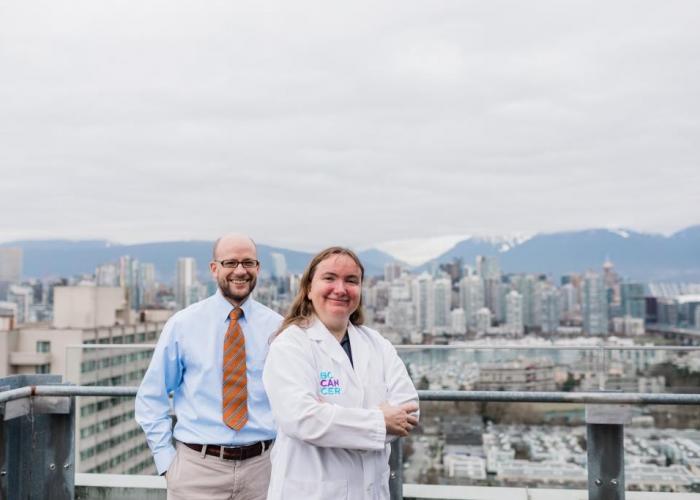
One of the first studies linking gene mutation to changes in cancer cells that can be therapeutically exploited has been published in Nature Medicine. Co-authored by BC Cancer – scientists Drs. Shannon Healy, David Scott and Christian Steidl, the study uncovered that when the TMEM30A gene was found mutated or lost in diffuse large B-cell lymphoma, tumours were more susceptible to chemotherapy – which can indicate a better prognosis. One possible reason for this is that the altered TMEM30A gene affects the cell membrane, leading to standard chemotherapy treatments to be taken up more effectively.
“Often we hear a story that if a gene is mutated or lost, it usually means a poorer prognosis. This is not the case here,” says Dr. Healy. “So now TMEM30A, if mutated, leads to more chemotherapy coming in because of changes in the membrane. That is discovery number one.” However there is a second learning that has come from this study too.
Macrophages, cells that are part of the immune system, are attracted to tumours with this mutation. Another consequence of TMEM30A mutations is that a molecule, called phosphatidylserine, appears on the outside of cancer cell. This is a recognition signal for the macrophages that can engulf and kill the lymphoma cells. “So the next step would be a drug screen – finding drugs that would inhibit TMEM30A,” suggests Dr. Steidl.
“Recently, new therapies have been described that enhance the ability of macrophages to eat tumour cells by combatting “don’t eat me” signals on the tumour cells. This discovery may identify patients that are particularly responsive to these new drugs” adds Dr. Scott.
“If we can enhance immunotherapies that are dependent on macrophages, we can stimulate our own immune system to finish the job eradicating cancer and that would be major progress,” adds Dr. Steidl.
Diffuse large B-cell lymphoma is the most common form of blood cancer. Knowing this biomarker is associated with a positive outcome this discovery has the potential to affect thousands of patients in the future.